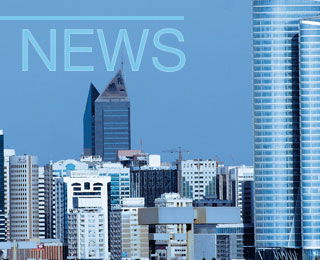This week Dangote Cement held a press conference on its 2016 results and explained why its market strategy in Nigeria changed from a volume-based approach to one focussing on cashflow and increased profit margins going forward.
In the first two quarters of 2016, Dangote found high cement volumes were working well. The group’s total cement volumes rose in Nigeria by 13.8 per cent to 15.1Mt in 2016, from 14.8Mt in 2015. Moreover, the company’s market share increased substantially up to June. However, this changed when the local currency was devalued and to maintain its margins, the producer increased cement prices and reduced its costs. The fuel mix at the company’s cement plants also had to change, as gas became expensive from the 3Q16, compared to the supply of coal from Kogi state.
There was also increased competition for Dangote at the end of the year, as BUA Group completed its new line in Edo state in 4Q16 and LafargeHolcim’s second line came on-stream at Mfamosing. However, Dangote emphasises that its cement volumes in Nigeria continued to grow as did its market share, which increased by four per cent to 65 per cent.
The scarcity of US dollars in Nigeria has led to a push for exports and an increased preference to use local coal. Dangote Cement operates 10 integrated cement plants in Nigeria and every second line now includes a coal mill, helping to reduce the impact of future rises in global fuel prices. To further improve the group's profitability, exports will continue to Niger, Chad, Ghana and Togo.
Pan-Africa growth
The group’s Pan-African growth has been significant in 2016 and was again based primarily on volume growth. As new operations are funded mainly by debt, their EBITDA margins do not grow fast, even if the local balance sheet is strong. Group cement sales in Pan-Africa reached 8.6Mt in 2016, representing an increase of 54 per cent on the 5.6Mt sold in 2015.
Cameroon cement volumes rose to give the company a 43 per cent market share in 2016. In Ethiopia Dangote now has 34 per cent market share thanks to sales of nearly 2Mt in 2016 from its Mugher plant. There is also potential to export from Ethiopia to markets in Somalia and South Sudan.
In Ghana volumes did rise to 1.1Mt for the company, but towards the end of the year cement prices fell to US$92/t from a high of US$115/t earlier in the year. To improve its distribution and competitiveness, the group now also has 1000 trucks operating in Ghana.
The longest-operating subsidiary, Dangote’s Senegal plant has established a 25 per cent market share and sales of 1Mta. The Pout works, 29km outside Dakar, is still improving its operations, so higher volumes are possible in 2017 with stable prices of US$77/t.
While cement sales in South Africa rose a little, the country does not represent a profitable market for any producer. Cement is selling at US$59/t, which is not sustainable for the producers. Dangote welcomes consolidation as the country currently has the lowest cement price in the sub-Saharan region.
Meanwhile, Dangote’s Zambia operations established a 40 per cent market share by the end of 2016 from its 1.5Mta Ndola factory. Cement prices in Zambia have been averaging US$79/t.
Moving forward into 2017
The star performer in 2017 for the group is likely to be the newly-established 3Mta Mtwara plant in Tanzania, where Dangote has produced 0.6Mt of cement since the unit's opening six months ago. However, two key operational issues remain. The first is the power plant which is not yet up and running, but it will be in 4-5 months' time. Secondly, the company is still negotiating a gas price with the government. While prices in Tanzania have been at around 85-90/t, they have fallen in recent months. Nevertheless, EBITDA doubled in 4Q16 from 3Q16 in Tanzania. Dangote has kept a lid on costs by using locally-mined coal and its own imported trucks for deliveries. Going forward, the company plans to run the trucks on low-pour fuel oil (LPFO) to further reduce costs.
Other highlights for the company expected in 2017 will be in Sierra Leone, where the new import terminal should contribute from 1Q17, and the 1.5Mta Mfila plant in the Republic of Congo,which is scheduled to start cement sales in 1Q17.
Dangote’s capex in 2017 is forecast to be US$300m. The majority of the earmarked funds will be spent on improvements in Tanzania, but around US$60m will be used in Nigeria. The new capex amount represents a reduction on the company's investment into new projects in the past three years. Now most of the company's projects have been implemented, capital expenditure is expected to slow as the company adopts a more measured approach. Dangote aims to adjust to the new exchange rate and pass on costs. As a result, the company does not expect to see the same volume growth in 2017 as in 2016.

Buzzi increases tender offer to Gulf Cement Co
After the offer document submitted on 13 March 2025 for TC Mena Holdings Ltd, a subsidiary of ...